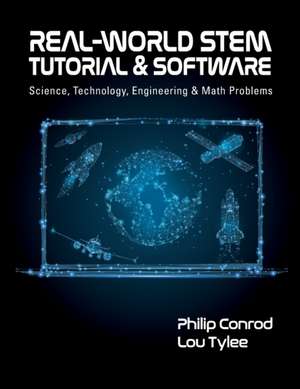Real-World STEM Tutorial & Software
Autor Philip Conrod, Lou Tyleeen Limba Engleză Paperback – 28 mai 2020
Preț: 516.17 lei
Nou
Puncte Express: 774
Preț estimativ în valută:
98.78€ • 102.75$ • 81.55£
98.78€ • 102.75$ • 81.55£
Carte tipărită la comandă
Livrare economică 15-29 aprilie
Preluare comenzi: 021 569.72.76
Specificații
ISBN-13: 9781951077303
ISBN-10: 195107730X
Pagini: 204
Dimensiuni: 216 x 280 x 11 mm
Greutate: 0.49 kg
Ediția:3rd Edition
Editura: Kidware Software
ISBN-10: 195107730X
Pagini: 204
Dimensiuni: 216 x 280 x 11 mm
Greutate: 0.49 kg
Ediția:3rd Edition
Editura: Kidware Software
Notă biografică
Philip Conrod has authored, co-authored and edited over two dozen computer programming books over the past thirty years. Philip holds a Bachelor's Degree in Computer Information Systems and a Master's certificate in the Essentials of Business Development from Regis University. Philip has also served in Information Technology leadership roles for companies like Sundstrand Aerospace, Safeco Insurance, FamilyLife, Kenworth Truck Company, PACCAR and Darigold. Philip currently serves as the President & Publisher of Kidware Software LLC and he enjoys writing and teaching about technology and computer science.
